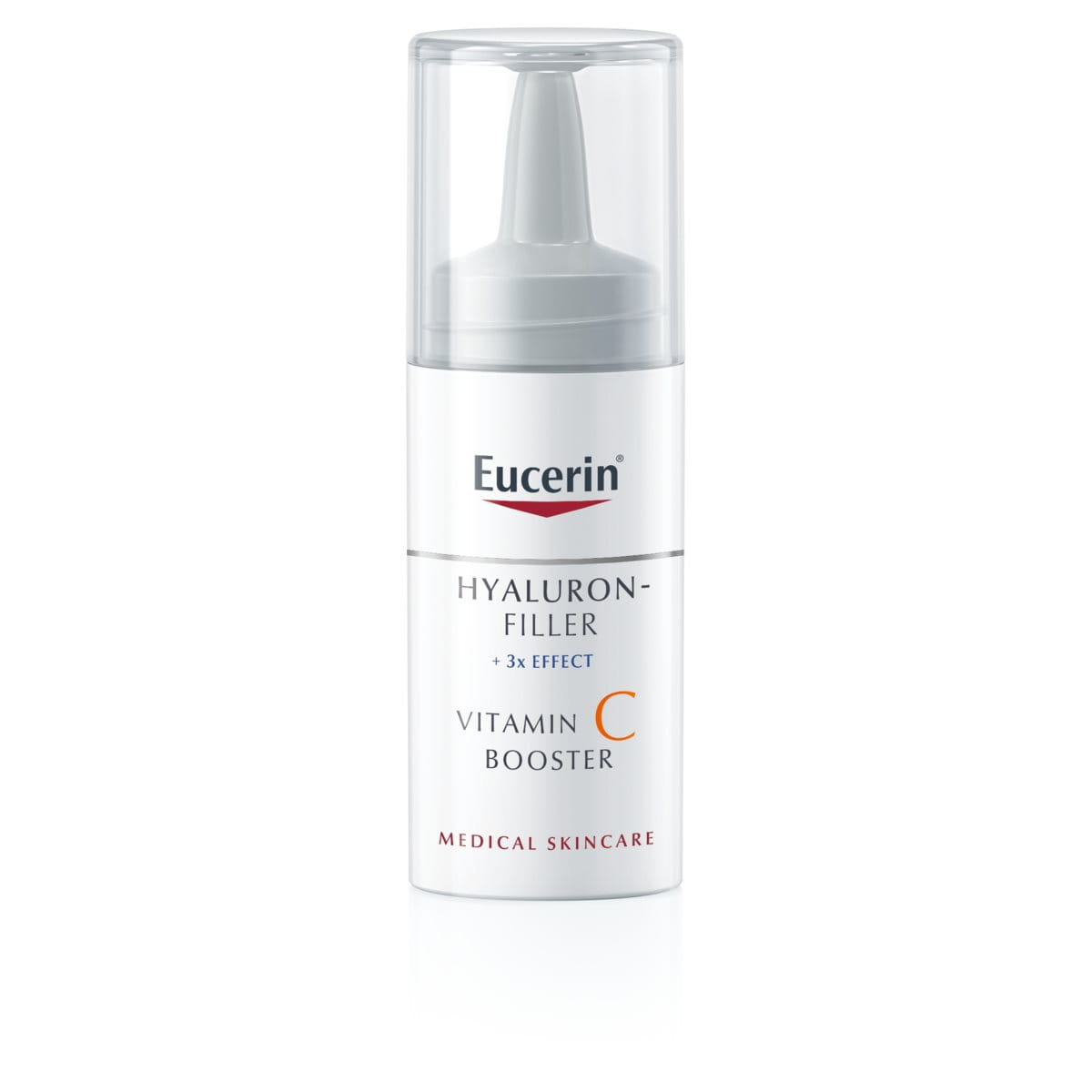Melasma is a type of hyperpigmentation that is common in women, especially during and after pregnancy. It normally appears as large dark patches on the face although other parts of the body can be affected. This article looks at what causes melasma and explains some steps you can take to help reduce the appearance of dark patches on your skin.
What is melasma and what causes it?
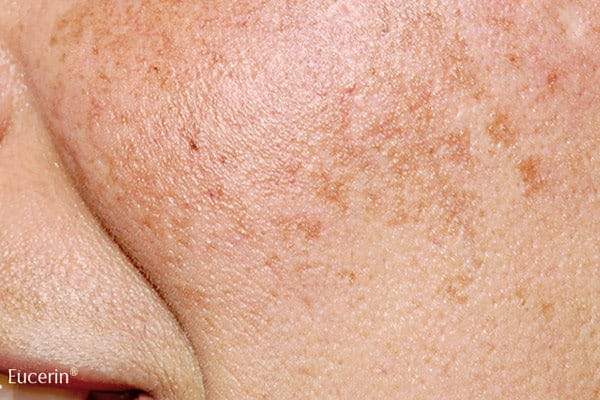
Melasma, also known as chloasma, is a form of hyperpigmentation that appears on the face, especially on the cheeks, bridge of the nose, forehead and upper lip and sometimes on other sun-exposed parts of the body, such as the forearms. Men can experience melasma, but it is much more common in women.
Melanin is the pigment that defines the color of a person’s skin, and melasma is caused by an increase in melanin production. This increase is thought to be triggered by changes in hormone levels, especially those caused by pregnancy and oral contraceptives, as well as by the sun.
Melasma is not in any way harmful but can cause distress when it is very noticeable.
Melasma and pregnancy

Between 10–15 percent of pregnant women experience melasma1 and the condition is sometimes referred to as “the mask of pregnancy”.
During pregnancy endogenous hormones (meaning the hormones that are produced naturally within the body) stimulate the melanocytes (the melanin producing cells located in the basal layer of the epidermis) causing them to produce more melanin.
1 The International Dermal Institute, Melasma Unmasked by Dr Claudia Aguirre quoting Kang, H. Y., & Ortonne, J. P. (2010). What should be considered in treatment of melasma. Annals of Dermatology, 22(4), 373–378.
Melasma and oral contraceptives
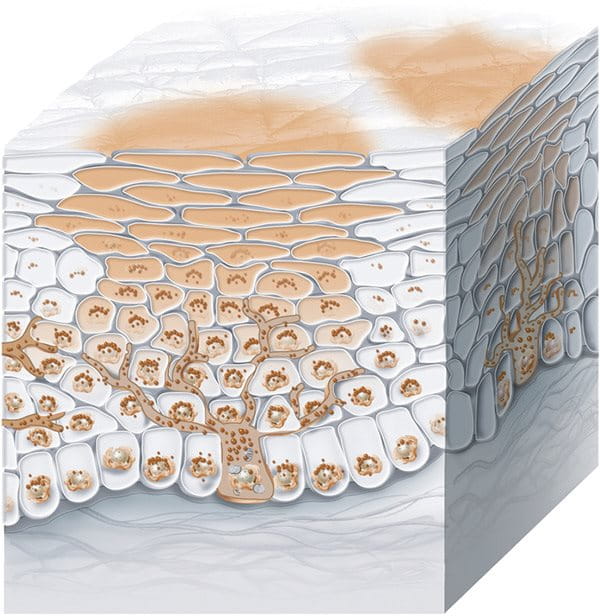
Between 10–25 percent of women taking oral contraceptives1 experience melasma. Women who take birth control pills undergo similar kinds of hormonal changes as those that occur during pregnancy. Unlike age spots, melasma can disappear of its own accord after birth or if estrogen intake is reduced.
1 The International Dermal Institute, Melasma Unmasked by Dr Claudia Aguirre quoting Kang, H. Y., & Ortonne, J. P. (2010). What should be considered in treatment of melasma. Annals of Dermatology, 22(4), 373-378.
The sun is a major contributor to, and aggravator of, the development of melasma and other factors such as family predisposition, age and certain anti-epilepsy drugs can also play a role.
There are three types of melasma:
- Epidermal melasma affects the top layer of skin and the hyperpigmentation is brown with well-defined borders.
- Dermal melasma affects the deeper dermal layers of skin and is characterized by blue-gray patches.
- Mixed melasma (a combination of epidermal and dermal) shows as a brown-gray pigment.
You can read more about what causes hyperpigmentation in general and find out more about the different types of the condition in Hyperpigmentation: what causes dark spots and how can I reduce them?
Important Information
Melasma and age spots are harmless. Melanoma (a type of skin cancer) can be life-threatening. If you have any concerns about your pigment spots – if they change shape, size and color or if they become itchy and start to bleed – it’s important that you consult your doctor.
What can I do to help prevent dark patches from forming?
A sensible attitude to sun protection is the most significant step you can take to helping to prevent or reduce the severity of melasma. Limit the time you spend in the sun, keep out of the sun during its most intense hours and wear protective clothing and sunhats whenever possible. This is particularly important if you have a genetic disposition to melasma (i.e. it runs in your family) or if you are pregnant, on the pill or taking another form of hormone supplement.
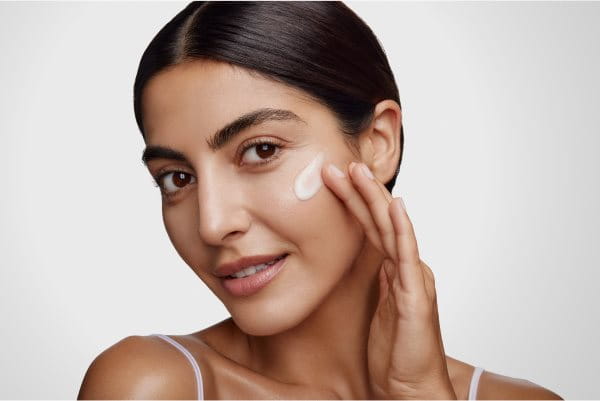
Sun protection is not just for sunbathers. The sun’s rays effect skin even on cloudy days, so give your skin the daily protection it needs. As well as reducing hyperpigmentation, Eucerin Anti-Pigment Day SPF 30 and and Anti-Pigment Day SPF30 Tinted in Light and Medium offer effective UVA and UVB (SPF 30) protection and prevent the formation of additional sun-induced pigment spots. If you’re going to be spending time in the sun choose a high or very high factor sun protection product which has been specially formulated for your skin type and condition and reapply it regularly. You can find out more about the Eucerin range of superior sun protection products here.
How can I remove or reduce melasma?

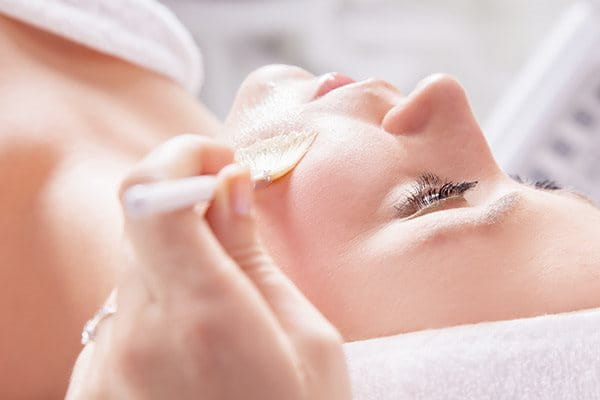
Dermatological treatments such as chemical peels and laser therapy can help to reduce melasma. Epidermal melasma is the easiest type to reduce but, due to the depth of the melanin pigments in dermal and mixed melasma, these types can be harder to treat.
- Chemical peels involve applying a chemical solution (such as an AHA) to exfoliate skin (remove dead skin cells), stimulate the growth of new skin cells and reveal new skin. Read more about chemical peels in What are chemical peels and how do they work?
- Laser therapy has a similar effect but tends to be more precise as the dermatologist has more control over the intensity of the treatment. Laser treatments involve ‘zapping’ the affected areas with high-energy light. The mildest treatments work on the skin’s epidermis (surface layer), while more intense treatments can penetrate the deepest layers of the skin. Find out more in Laser therapy: how should I care for my skin after treatment?
Dermatologists may also prescribe and/or use hydroquinone which is still regarded as the most effective topical agent for reducing hyperpigmentation. It can, however, only be used for limited periods of time because, like other forms of chemical peel and laser treatment, it can irritate skin and actually cause post-inflammatory hyperpigmentation, especially in people with phototype 3 – 6 (Please refer to Fitzpatrick phototyping scale).
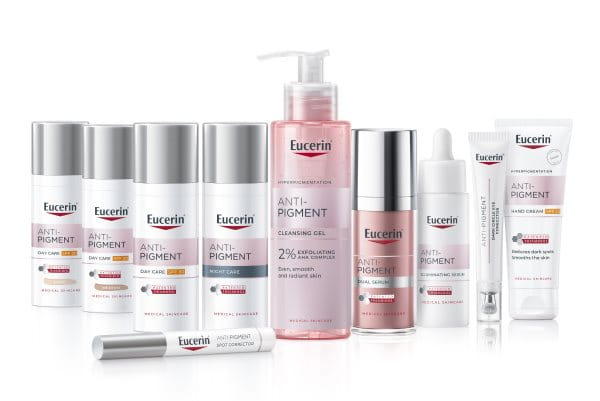
Dermo-cosmetic skincare products can be used daily to help to extend the results of dermatological treatments. Made using Eucerin’s patented ingredient Thiamidol, the range includes a day cream, a night cream, a dual serum and a topical spot corrector for addressing hyperpigmentation. Tinted day creams in light and medium also include an SPF 30 and UVA filter, while the skin perfecting serum is designed to boost your skin’s natural radiance. It has been clinically and dermatologically proven to reduce dark spots and prevent their re-appearance. The Dual Serum now comes in a mono-chamber pack to make application even easier, with the same proven efficacy in the formula.
Our brand values

We deliver a holistic dermo-cosmetic approach to protect your skin, keep it healthy and radiant.

For over 100 years, we have dedicated ourselves to researching and innovating in the field of skin science. We believe in creating active ingredients and soothing formulas with high tolerability that work to help you live your life better each day.

We work together with leading dermatologist and pharmacist partners around the world to create innovative and effective skincare products they can trust and recommend.


